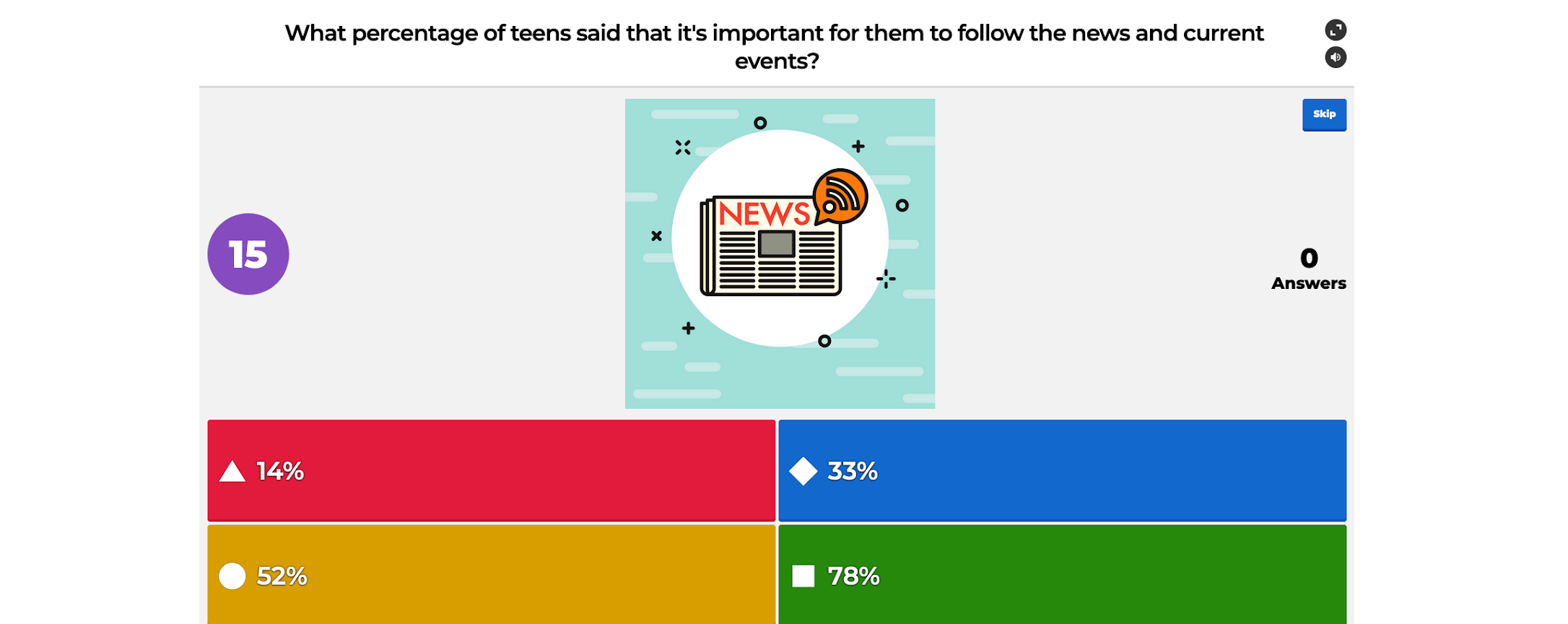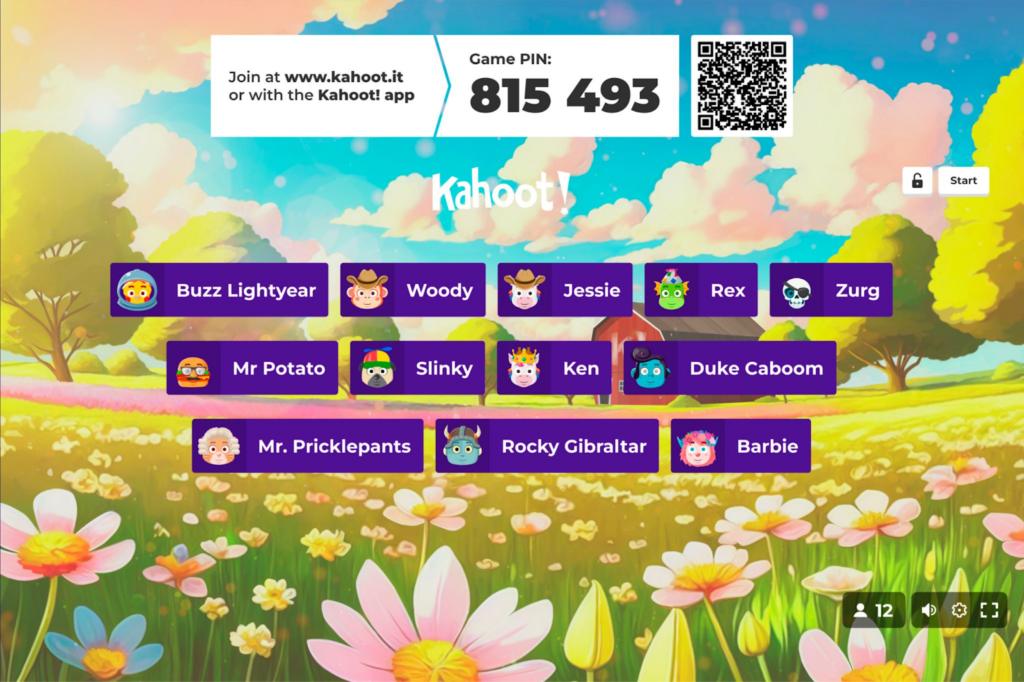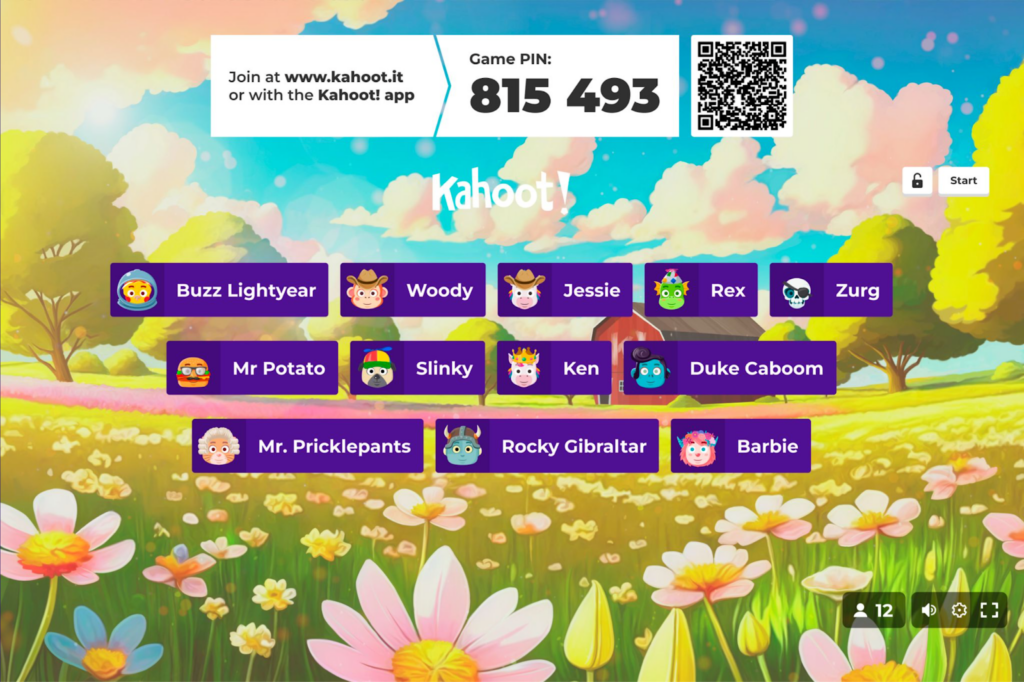Gamifying learning is a great tool for creating engagement in the classroom, as well as helping students to focus their attention on learning rather than on grades and reduce stress and anxiety surrounding participating in class. Of course it can’t be used as the only means of instruction or assessment, but I believe when used appropriately it is an excellent tool for learning.
An example of how games can be used effectively in the classroom (and one which I have seen good results from personally) is Kahoot.
Kahoot is an online quiz website that is very interactive. A good comparison if you haven’t heard of it before, is it is sort of like Jeopardy. Teachers create a quiz based on class content (or can use a preexisting quiz someone else uploaded publicly on the website).

The quizzes usually have options A,B,C,D, but you can also create matching, or true/false questions. Each answer has a distinct colour (red, blue, green, yellow) and often has an image associated with it. This helps make the game more accessible to learners by having multiple means of representation. The teacher then presents a code to the students, and they go to the kahoot website and type in the code on a phone or computer, and are entered into a class wide quiz. They create a screen name, and then the game begins! Students acquire “points” based on how quickly they give a correct answer, by selecting the option they want on their device after the prompt is shown on the class projector. At the end of each question, the podium is updated to show the top 5-10 players and then the next question begins. At the very end of the quiz, a leaderboard is shown with virtual “medals” awarded to the top 3 students.

The anonymity of Kahoot encourages students who are generally quieter to participate and engage, and is much less nerve wracking for the majority of students than raising their hand and giving an answer in front of the class. I played this game when I was in high school from 2015-2018, and I was always excited about it.
Kahoot is best used as a tool to reinforce or review concepts. Previous teachers I have had have used Kahoot as a review tool before a test, or mid-unit as a gauge to see how well students are picking up on and understanding the concepts (a sort of formative assessment). I don’t think this game can be used well to examine learner’s understanding of course concepts in a summative way due to the competitive nature of the game. Students could log in using their real names, but then it becomes a lot more of a “who’s the smartest” competition rather than a fun game to reinforce learning and creates a person vs person environment rather than encouraging students to help each other. Students can also easily cheat by collaborating with each other (if this was to be used as a formative test), trade devices, etc, and there is no way of knowing for sure if a student actually did type their name into the user block rather than the name of another student.
There is also nothing which blocks another person from joining who is not in the class (students can share the login code via social media etc). This person would not be able to see the screen with prompts on them (their device only displays the colour options and not the question prompt, see below), but it does sometimes cause confusion or derails the class! I was a cheeky grade 12 student and I sent my friend from California an English class kahoot link, and he joined in and somehow managed to place 5th, and nobody could figure out who he was (until I came clean)….

This brings me to another caution: ground rules with the usernames. Since students can decide their own, Kahoot does have a filter which blocks swear words or obscene words, but students could come up with a name that bullies another student in the class. It is important that the teacher remind students to be respectful and share names that treat all students with kindness and care.
Finally, one additional consideration with using this game is access to technology. A lot of schools have chrome books which can run the game if not all students have phones, but this is not the case in every school. Teachers must consider what students have access to, and only run this game if every student has equal access to playing it!
I would love to implement kahoot quizzes in my science classrooms! I think this could be great in general science for the biology unit, where there is a lot of jargon students need to understand and not just memorize. Using this low-stakes and high-payoff game, students can offer wrong answers and not be afraid to be wrong. They can see where their misunderstandings may lie, and correct some misconceptions. This can segway into a conversation about study habits, and how to focus on material you don’t understand well vs trying to study everything all at once and getting overwhelmed. I would also see this being useful in chemistry 11/12 when talking about concepts such as acidity/bacisity, factors which affect reaction rates, organic chemistry terminology, and trends in the periodic table, for the same reasons as the biology example.

Leave a Reply
You must be logged in to post a comment.